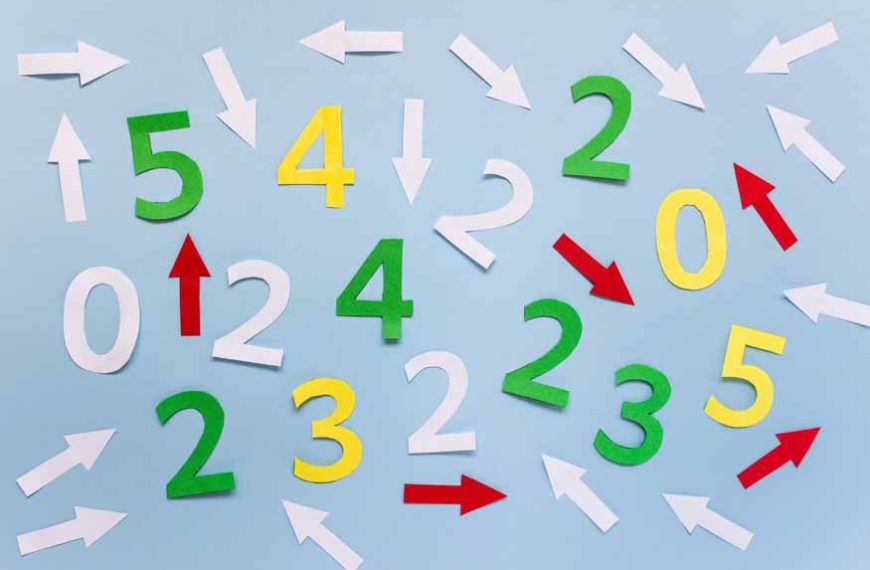Understanding the concept of “descending order” is essential in various fields, from mathematics to data organisation. In this blog, we will explore what descending order means, its symbolism, and provide illustrated examples. This concept is not only crucial for academic purposes but also in everyday life where organisation and prioritisation are key.
What is Descending Order?
Descending order is an organising principle that involves arranging numbers, objects, or even concepts in a sequence where each element is less than or equal to the one before it. This method of arrangement emphasises a decrease from the highest to the lowest. Imagine you are looking at a series of steps: starting from the top, each step you take moves you to a lower level. This visual analogy is what descending order represents in a practical sense.
In mathematics, descending order is not just limited to numbers. It can be applied to a range of elements including algebraic terms, where variables and coefficients are arranged from the largest to the smallest based on their absolute values or exponents. This order is also vital in statistical analysis and probability theory, where data points are often arranged from highest to lowest to identify trends and make predictions.
Moreover, descending order has a significant role in the organisation of information beyond academic contexts. In library systems, for example, books or resources may be organised in descending order based on certain criteria like publication year or authors’ last names. This method aids in easy retrieval and efficient management of information.
We hope that the elaborate explanation would have helped answer the question, what is descending order!
Descending Order Example
Let’s explore a more complex descending order example. Consider a scenario where you have a mix of positive and negative numbers: -3, 12, 0, -7, and 8. Arranging these in descending order would result in 12, 8, 0, -3, -7. Notice how the sequence smoothly transitions from the highest positive number to the lowest negative number.
This arrangement is not just limited to simple integers. Imagine a set of fractions or decimals like 0.75, 2/3, 1.25, and -0.5. In descending order, these would be arranged as 1.25, 0.75, 2/3, -0.5, showcasing the versatility of this concept across different forms of numerical data.
Symbol of Descending Order
The downward-pointing arrow (↓) used to symbolise descending order is more than a mere indicator. It embodies the concepts of reduction and decrement. In graphical representations, such as charts and graphs, this symbol is often used to depict a decrease in values over a period. It’s a universally recognised marker that conveys the idea of descent without the need for words, making it a powerful tool in both educational and professional settings.
Illustrated Instances of Descending Order
- Technology and Computing
- Financial Markets
In the realm of computer science, descending order is crucial in algorithms and database management. Sorting algorithms often have to arrange data in descending order for efficiency and optimization purposes. Similarly, databases might display query results in descending order to highlight the most relevant or recent entries.
In financial markets, stocks, bonds, and other securities are frequently listed in descending order based on their market value, yield, or performance metrics. This helps investors quickly assess the highest-performing assets.
Why is Understanding Descending Order Important?
Learning about descending order is more than simply an academic exercise; it gives people a vital skill for problem-solving and critical thinking. The capacity to organise and analyse data in decreasing order can help make better decisions in real-world situations, such as choosing items based on user reviews or making decisions about personal financial or business strategy.
Moreover, in the realm of education, particularly in subjects like mathematics and science, mastering the concept of descending order is fundamental. It lays the groundwork for understanding more complex theories and principles. For young learners, it fosters an early appreciation for structure and logic, skills that are invaluable in their academic journey and beyond.
Descending Order in Cultural and Historical Contexts
Descending order also plays a significant role in cultural and historical studies. In historical timelines, events are often arranged in descending order to present the most recent events first, offering a reverse chronological perspective. This approach provides a fresh lens to view history, starting from the present and moving backwards, allowing us to understand how current situations are influenced by past events.
Culturally, descending order is evident in traditional practices like ranking members of society based on age or status. In many cultures, respect and privileges are accorded in descending order, starting from the elders to the youngest. This hierarchy is not just a social construct but deeply ingrained in cultural norms and rituals. Understanding this order helps in appreciating the nuances of different cultures and their values, offering insights into how societies prioritise and organise social structures.
Descending Order in Environmental Studies
In environmental studies, descending order is crucial in analysing data related to climate change, pollution levels, and biodiversity. Scientists often arrange data sets from the highest to the lowest to assess the severity of environmental issues. For instance, when studying air pollution, cities might be ranked in descending order based on pollution levels to identify the areas most in need of intervention.
Furthermore, descending order is used in ecological hierarchies to categorise species based on their risk of extinction. Endangered species are often listed from the most at risk to the least, helping conservationists prioritise their efforts. This methodical arrangement facilitates a clearer understanding of environmental challenges and aids in the effective allocation of resources for conservation and sustainability efforts. Understanding how descending order is applied in environmental contexts underscores its importance in addressing some of the most pressing issues facing our planet.
Descending order is a straightforward yet powerful concept that helps in organising information efficiently. Whether it’s for academic purposes, data analysis, or everyday decision-making, understanding how to arrange items in descending order is invaluable.
At EuroKids, we believe in laying a strong foundation for our young learners. Understanding basic concepts like descending order in ascending order is a stepping stone in the journey of learning. Our curriculum is designed to make learning fun and engaging, ensuring that concepts like these are understood and remembered. Visit EuroKids for a learning experience that combines fun with education, tailored specifically for the curious minds of India!















